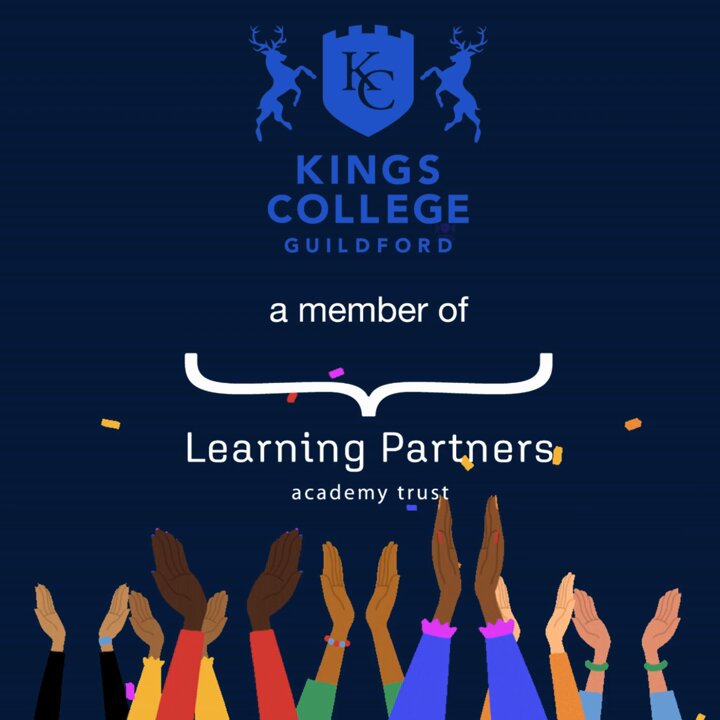The Latest News
Thoughts about leading teaching and the day Gareth Edwards visited my school
8th February 2021
Our Trust’s secondary teaching group has just met for the third time, looking at the challenges of delivering great learning in the current landscape and how the lessons forged over the last ten months will inform our teaching and our leadership of teaching when the world returns to a nearer normal. In all three meetings we’ve had so far, I’ve been struck by the purposeful optimism of the group, a determination to find solutions and a willingness to share expertise. Above all else, there is a sense that, through this collaborative and positive approach, we can produce something even better than before. A something that will benefit the future of our schools. And that got me thinking about Gareth Edwards.
I was just 12 when Gareth Edwards visited my school to coach our team. Gareth Edwards? The son of a Welsh miner, he was selected to play rugby for his country at scrum half when he was just 19 years of age. At 20, he captained the team, the youngest ever to do so. He went on to play 53 matches for Wales during the 1960s and 70s in what was to become one of Wales’ best ever rugby teams. He was never dropped. He also played fifteen games for the British Lions. In 2003, he was voted the world’s best ever rugby player. However, he is probably best known for scoring the most amazing try in the history of the game, playing for the Barbarians against the mighty All Blacks in 1973. You can still see it – grainy and quaint but nevertheless quite, quite brilliant at http://www.youtube.com/watch?v=AwCbG4I0QyA .
So why did the world’s best come to our school to coach us, the under 13s in which I played number 10 (Jonny Wilkinson’s position, but there the similarity ends)? To tell you the truth, I don’t know. Perhaps it was curiosity. Or some sort of charitable instinct: a favour to a schoolmaster fondly remembered. It certainly wasn’t because we were the rugby-playing elite. In fact we were the very antithesis. In a school that prided itself on its soccer tradition, we were the also-rans. These were cruel times and we were the ones left standing in the line waiting to be picked by our more talented peers when all the half-decent players were already under way with their game. After all, what difference would it make when we joined the fray? It was sheer luck for us that a teacher arrived at the school fresh from Loughborough University, took pity on us and started the school’s first rugby team.

We were all shapes and sizes and suffered from numerous impediments that made us unlikely athletes. For example, Stygall on the left wing was less than a hundred pounds in weight. He was also hopelessly short-sighted so that, by his own admission, he struggled to see the ball and would often end up confused and joining the opposition. He was also asthmatic (at a time before inhalers would make much of a difference). However, what he did have was a remarkable turn of speed and this, coupled with his abject terror and instinct for survival, made him a potential try scorer. Particularly if he was facing in the right direction, someone had placed the ball in his hands and he only had a few metres to go to the opposition line. Then, his gasps for breath had the potential to unsettle: a fear that if he were tackled he might stop breathing all together. Unfortunately, this combination of try-scoring events was a rarity. At the time that Gareth Edwards came to coach us we had lost every game we had ever played – some by as many as a fifty points.
Back then in the sixties all the great scrum halves used to pass the ball by diving full length – like an Olympic swimmer at the start of a sprint or a modern day footballer seeking the elusive penalty. And as Gareth Edwards admitted to us as we shivered and shook on that bleak November morning, he wasn’t very good at it. Yes, he was quicker than most: he was exceptionally strong for his size; but when it came to hurling himself full-length, his pass lacked the accuracy and distance of the best. So, he had to try to develop something new. A something even better than before.
The great man capped his talk by a demonstration of the technique: the Gareth Edwards’ spin pass. “Who plays number 10?” he asked. A hand tapped me on my shoulder and something fizzed inside my head. Many years later, it would happen again, when my first child was born. We named him Gareth.
My parents tell me that 14th November, 1970 is another important date in the history of rugby. It is the day when my school’s revitalised Under 15s won their first match. And although the years can play slippery tricks, I am sure that it was Stygall, sprinting in from five metres, his chest rattling, terror etched onto his face, who dived triumphantly over the line for that winning try.
Graham Tuck, Director of Secondary Education Athena Schools Trust
Our Trust’s secondary teaching group has just met for the third time, looking at the challenges of delivering great learning in the current landscape and how the lessons forged over the last ten months will inform our teaching and our leadership of teaching when the world returns to a nearer normal. In all three meetings we’ve had so far, I’ve been struck by the purposeful optimism of the group, a determination to find solutions and a willingness to share expertise. Above all else, there is a sense that, through this collaborative and positive approach, we can produce something even better than before. A something that will benefit the future of our schools. And that got me thinking about Gareth Edwards.
I was just 12 when Gareth Edwards visited my school to coach our team. Gareth Edwards? The son of a Welsh miner, he was selected to play rugby for his country at scrum half when he was just 19 years of age. At 20, he captained the team, the youngest ever to do so. He went on to play 53 matches for Wales during the 1960s and 70s in what was to become one of Wales’ best ever rugby teams. He was never dropped. He also played fifteen games for the British Lions. In 2003, he was voted the world’s best ever rugby player. However, he is probably best known for scoring the most amazing try in the history of the game, playing for the Barbarians against the mighty All Blacks in 1973. You can still see it – grainy and quaint but nevertheless quite, quite brilliant at http://www.youtube.com/watch?v=AwCbG4I0QyA .
So why did the world’s best come to our school to coach us, the under 13s in which I played number 10 (Jonny Wilkinson’s position, but there the similarity ends)? To tell you the truth, I don’t know. Perhaps it was curiosity. Or some sort of charitable instinct: a favour to a schoolmaster fondly remembered. It certainly wasn’t because we were the rugby-playing elite. In fact we were the very antithesis. In a school that prided itself on its soccer tradition, we were the also-rans. These were cruel times and we were the ones left standing in the line waiting to be picked by our more talented peers when all the half-decent players were already under way with their game. After all, what difference would it make when we joined the fray? It was sheer luck for us that a teacher arrived at the school fresh from Loughborough University, took pity on us and started the school’s first rugby team.

We were all shapes and sizes and suffered from numerous impediments that made us unlikely athletes. For example, Stygall on the left wing was less than a hundred pounds in weight. He was also hopelessly short-sighted so that, by his own admission, he struggled to see the ball and would often end up confused and joining the opposition. He was also asthmatic (at a time before inhalers would make much of a difference). However, what he did have was a remarkable turn of speed and this, coupled with his abject terror and instinct for survival, made him a potential try scorer. Particularly if he was facing in the right direction, someone had placed the ball in his hands and he only had a few metres to go to the opposition line. Then, his gasps for breath had the potential to unsettle: a fear that if he were tackled he might stop breathing all together. Unfortunately, this combination of try-scoring events was a rarity. At the time that Gareth Edwards came to coach us we had lost every game we had ever played – some by as many as a fifty points.
Back then in the sixties all the great scrum halves used to pass the ball by diving full length – like an Olympic swimmer at the start of a sprint or a modern day footballer seeking the elusive penalty. And as Gareth Edwards admitted to us as we shivered and shook on that bleak November morning, he wasn’t very good at it. Yes, he was quicker than most: he was exceptionally strong for his size; but when it came to hurling himself full-length, his pass lacked the accuracy and distance of the best. So, he had to try to develop something new. A something even better than before.
The great man capped his talk by a demonstration of the technique: the Gareth Edwards’ spin pass. “Who plays number 10?” he asked. A hand tapped me on my shoulder and something fizzed inside my head. Many years later, it would happen again, when my first child was born. We named him Gareth.
My parents tell me that 14th November, 1970 is another important date in the history of rugby. It is the day when my school’s revitalised Under 15s won their first match. And although the years can play slippery tricks, I am sure that it was Stygall, sprinting in from five metres, his chest rattling, terror etched onto his face, who dived triumphantly over the line for that winning try.
Graham Tuck, Director of Secondary Education Athena Schools Trust











